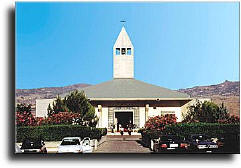|
Sciara
derives from Greek "Xiara" (wood) in fact it is probable that
thoseplaces were once full of vegetation. Past of the place can be read in its territory, in the villages of Stanze, Brucato and Mura Pregne which testify ancient and glorious Sciara. In Sciara's territories are cultivated some products like olives, grapes, cereals, citrus fruit, fruit and excellent artichokes that are displayed in the cereal feast of the artichoke which takes place in April. The inhabited centre has two beautiful churches, that of Sant'Anna and that of Crucifix. The latter is defined has a pre-Gothic style, for its two spires like those of the Cathedral of Magonza, famous romanesque monument of Germany. Of notable
interest is the Museum which contains an ethno-anthropological collection
of peasant civilization proved by documents also during productive cycles
of soils.
Numerous are manifestations of folklore and faith which gladden the small town all over the year: Sant'Egidio's ride, kept on the last Sunday of September; "Virgineddi's" ride kept in occasion of San Giuseppe's day; the feasts of Santa Lucia and of Immacolata in occasion of which is celebrated a mass and all the people take part to it. During the feast believers pass in procession carrying torches and they come first the statue of Vergine Maria (Virgin Mary), followed in its turn by a band and by the rest of people. Sciara is surely a small town worth being visited: landscape, art and history mix one another in composing an original and precious picture. |

